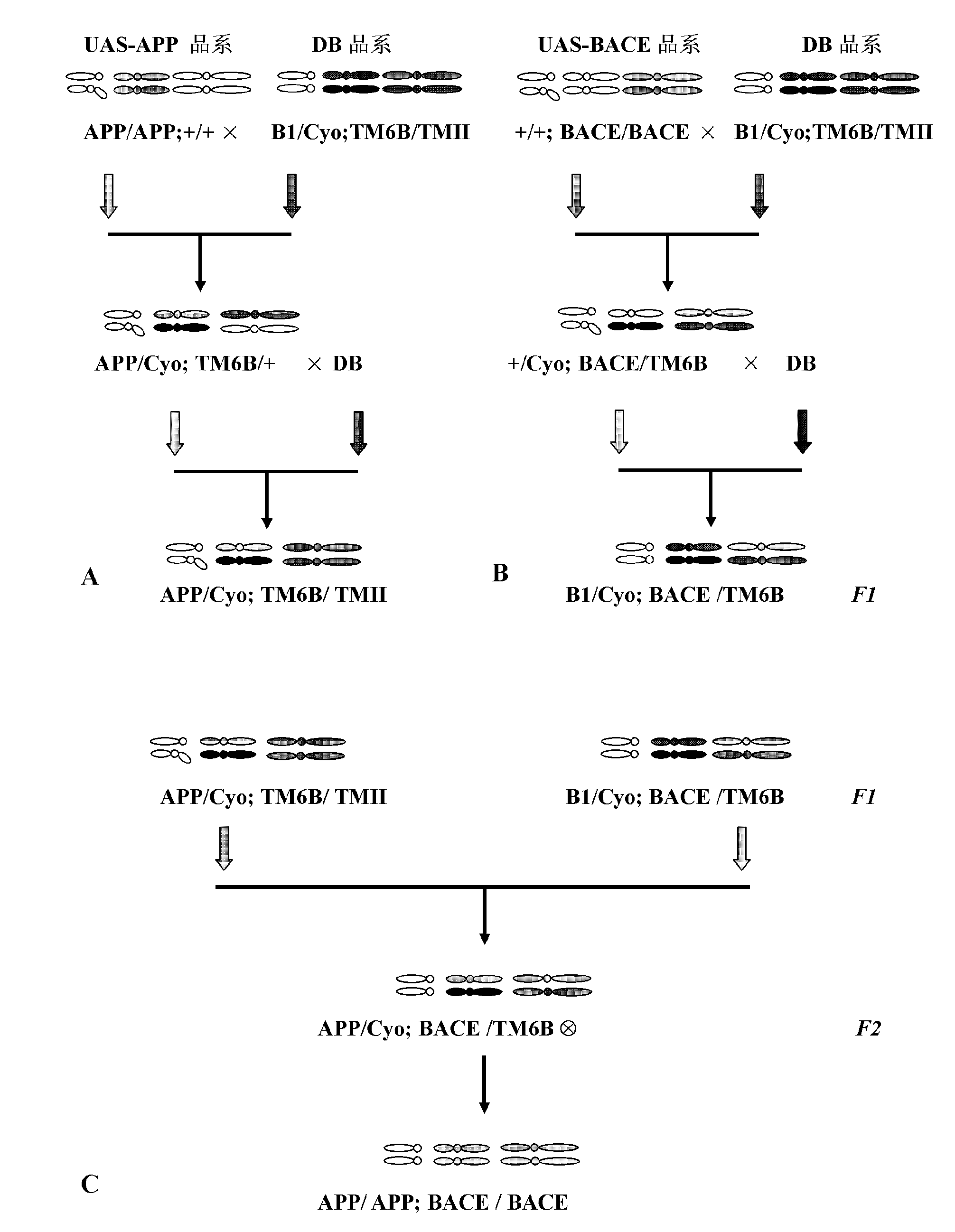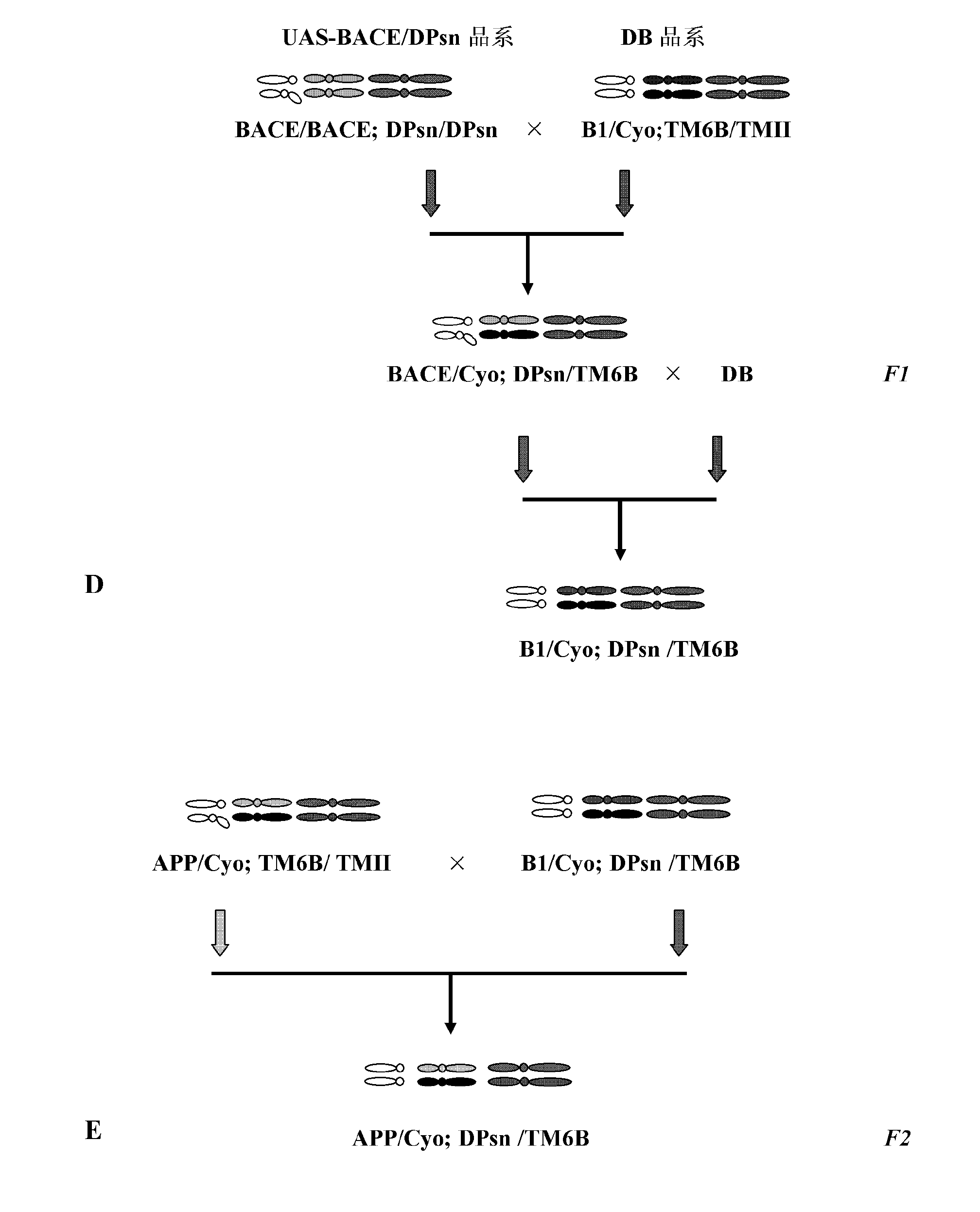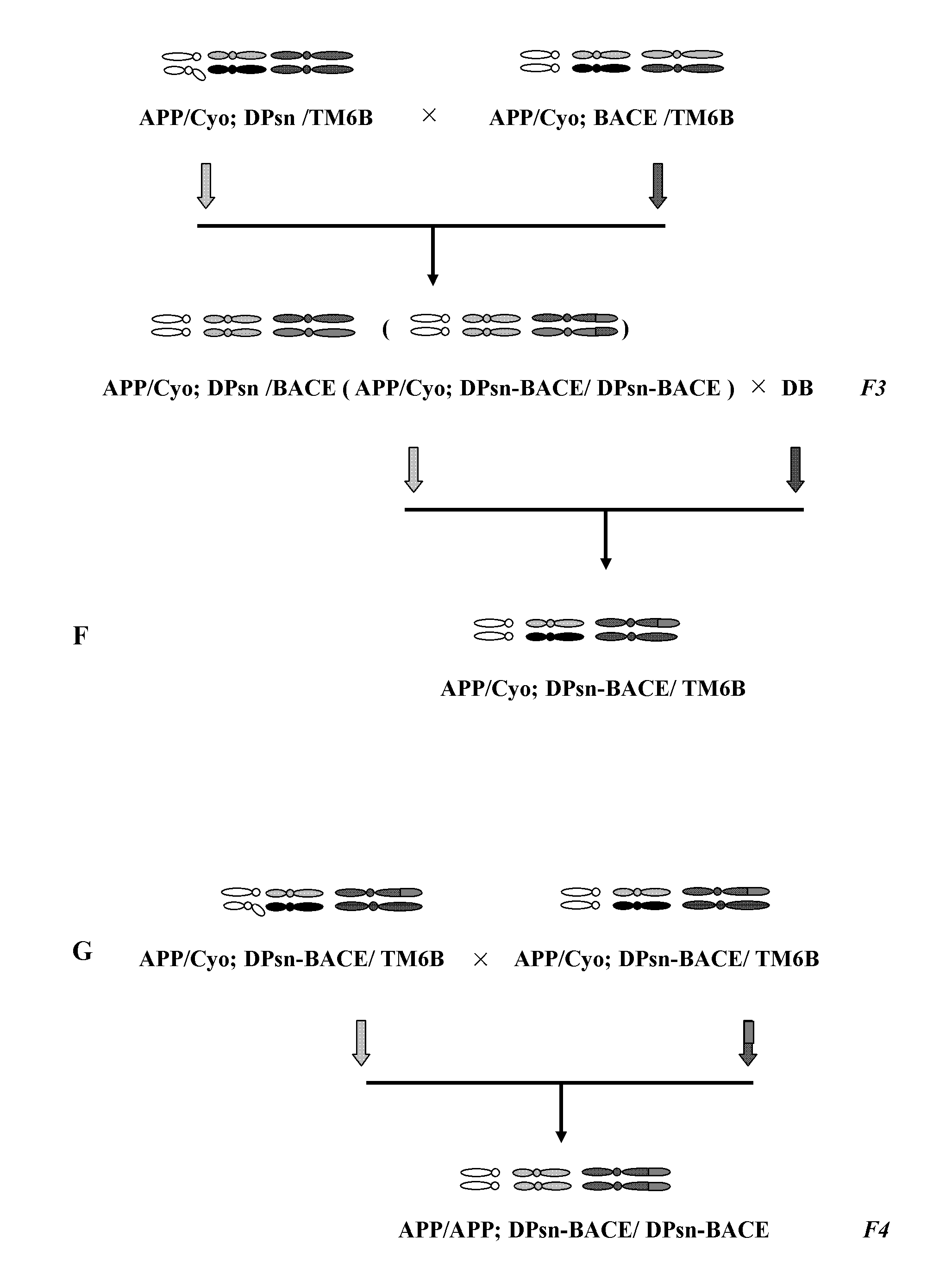Anti-Alzheimer's Transgenic Drosophila Model and Its Application in Drug Screening
A fruit fly and model technology, applied in the fields of medicine and biology, can solve problems that consume a lot of time and money, and affect research progress
- Summary
- Abstract
- Description
- Claims
- Application Information
AI Technical Summary
Problems solved by technology
Method used
Image
Examples
Embodiment 1
[0205] Example 1: Obtaining stable double-trait Drosophila lines by crossing transgenic Drosophila
[0206] In this example, the fruit flies of the original transgenic fruit flies were crossed with the DB fruit flies respectively, and the offspring fruit flies with the transfer gene and the balancer screening marker were obtained, and the specific screening marker was screened to obtain the line preservation (F2 ). The F2 generation fruit flies of the two strains were crossed to obtain the second generation of fruit flies, and the impure and double transgenic fruit flies (F3) that can be stably inherited were obtained by screening two different balancers at the same time, and obtained through selfing for one generation Pure and instrumental double transgenic Drosophila (F4) models that can be used for mating to produce offspring Drosophila.
[0207] There are two kinds of tool double transgenic fruit flies (F3) obtained by continuous crossing, namely (APP / APP; BACE / BACE) and ...
Embodiment 2
[0224] Example 2: Identification of the Drosophila model
[0225] 1. Human APP protein and β-secretase protein expressed in Drosophila
[0226] The C-terminus of the human APP protein contains fragments of β-amyloid protein, such as figure 2 Indicated by the black area, two forms of β-amyloid, Aβ40 and Aβ42, are produced after cleavage by β-secretase and γ-secretase in vivo. In the transgenic Drosophila expressing UAS-APP, the inventors can detect two kinds of glycosylated APP ( figure 2 Lanes 11 and 15 in the upper figure of B), after co-expressing human BACE protein, the expression of high molecular weight glycosylated APP was significantly reduced. It shows that in Drosophila, human BACE secretase is easy to cut high molecular weight APP. At the same time, the C-terminal fragment of APP generated by β-secretase cleavage [β-C-terminal fragment (CTF)] ( figure 2 B upper panel lanes 1, 2 and 5, 6). In the low-expression UAS-Aβ1-1 and UAS-Aβ1-2 fruit flies, the high-exp...
Embodiment 3
[0230] Example 3: The neurotoxicity caused by the deposition of amyloid protein caused by APP cleavage to generate Aβ was verified by survival and behavior experiments, and the regulation of β-secretase plays an important role in protecting neurons.
[0231] The methods of survival and behavioral experiments used in this example are referenced in Dissecting the pathological effects of human A{beta}40 and A{beta}42 in Drosophila: A potential model for Alzheimer's disease (PNAS, 2004, Zhong Yi et al.) , the specific scheme is as follows:
[0232] The experimental fruit flies are as follows:
[0233] Wild type Drosophila (WT): elav c155 / CS (CS is common wild-type Drosophila, see the aforementioned PNAS, 2004, the literature of Zhong Yi et al.); AD Drosophila (Aβ): elav c155 / +(y); Aβ1 / +, elav c155 / +(y); Aβ2 / + (see the aforementioned PNAS, 2004, the literature of Zhong Yi et al.); AD / APP; BACE Drosophila (APP / +; BACE / +): prepared in Example 1; AD / APP ; DPsn-BACE Drosophila (...
PUM
 Login to View More
Login to View More Abstract
Description
Claims
Application Information
 Login to View More
Login to View More - R&D
- Intellectual Property
- Life Sciences
- Materials
- Tech Scout
- Unparalleled Data Quality
- Higher Quality Content
- 60% Fewer Hallucinations
Browse by: Latest US Patents, China's latest patents, Technical Efficacy Thesaurus, Application Domain, Technology Topic, Popular Technical Reports.
© 2025 PatSnap. All rights reserved.Legal|Privacy policy|Modern Slavery Act Transparency Statement|Sitemap|About US| Contact US: help@patsnap.com



